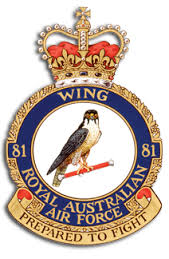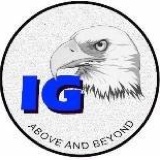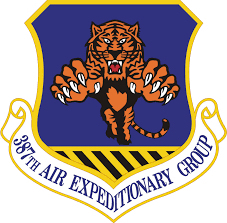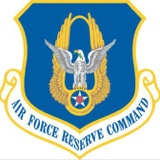Title Page
-
1. IRT the Defence Aviation Safety Manual (DASM), Section 2, this checklist is compiled to assist Commanding Officers in adequately assessing their unit’s aviation safety management system. 2. Completing this checklist, in fact, accomplishes the unit’s twelfth element requirements. Answers in the affirmative indicate compliance with the other eleven. Reference to DASM, Section 2, Chapters 1-12, and Section 3, Chapters 1-12, may assist in answering some questions. **CUT AND PASTE THIS TEXT INTO THE TEXT BOX**
-
Document No. xxx/year
-
Audit Title - Audit of XXXSQN
-
Client / Site - RAAF XXX
-
Conducted on
-
Prepared by
-
Location
-
Personnel
Genuine Command Commitment
Genuine Command Commitment
-
Do squadron structures and processes support the 12 elements?
-
Are all safety positions filled with qualified and trained personnel?
-
Is there a succession plan for all safety positions?
-
Are personnel in succession plan properly trained? e.g. UASO?
-
Are the necessary resources provided to resolve identified safety issues?
-
Are safety OIP adequate and reviewed at least every 3 years?
-
Is the commander’s aviation safety policy clearly displayed?
-
Is higher command guidance and policy clearly displayed?
-
Do squadron execs know aviation safety is to be embedded into all aspects of aviation operations?
-
Does the CO attend all safety meetings?
-
Does the CO review all incident/hazard reports?
-
Does the executive staff contribute to safety stand-downs?
Generative Aviation Safety Culture
-
Do you take responsibility for your squadron’s safety culture?
-
Does the SQN know what constitutes a generative safety culture?
-
Can all members raise safety issues without fear or favour?
-
Does the squadron have a robust reporting mechanism to facilitate communication of safety issues by all personnel?
-
Is there a robust feedback mechanism to ensure personnel are aware of your responses to safety issues that have been raised?
-
Are all raised safety issues and suggestions considered by the unit Aviation Safety Committee or executives?
-
Is human error and violation treated fairly and appropriately?
-
Are personnel encouraged to actively search for improvements to aviation safety?
-
Do you demonstrate the characteristics of a generative safety culture?
-
Do you acknowledge safety-enhancing behavior?
Defined Safety Organisation Structure
-
Does SQN safety structure support fulfillment of the 12 elements?
-
Do safety positions have promulgated duty statements?
-
Are emergency response responsibilities allocated and promulgated?
-
Is there a process to support hazard identification, reporting, investigation and risk management?
-
Do UASOs have only one secondary duty?
-
Are UASOs able to complete all required duties?
-
Is there a MASO?
-
Are all key safety personnel aware of their responsibilities?
-
Does the Aviation Safety Committee meet at least twice a year?
Communication
-
Is the CO’s aviation safety policy prominently displayed?
-
Are higher commander’s aviation safety policy prominently displayed?
-
Is SQN policy on open and honest reporting regularly reiterated?
-
Is there a process to rapidly disseminate aviation safety info?
-
Are various means in place to communicate and control aviation safety information?
-
Is there regular contact with DDAAFS?
-
Is there regular contact with HQAC CASO?
-
Is the DASM and DIs conveniently located for all personnel?
-
Are minutes to aviation safety meetings available to all personnel?
-
Are personnel recognized and awarded for making significant contributions to aviation safety?
-
Are details of safety appointments displayed?
-
Are safety stand-downs held at least every six months?
-
Is there rapid release of safety survey data and CO’s response?
-
Is there a Unit Aviation Safety Committee (UASC)?
-
Are UASC minutes sent to ACG, 81WG, HQAC and DDAAFS?
-
Are UASC meeting safety issues actioned appropriately?
Documented Safety Policy
-
Are safety documents regularly reviewed (at least every 3 years) and revised as necessary?
-
Are obsolete documents promptly removed?
-
If archival documents retained for legal or knowledge preservation, are they suitably identified/separated to ensure against unintended use?
-
Are safety documents readily located?
-
Are current versions of relevant safety documents available?
Training and Education
-
Are aircrew, maintenance officers, and appropriate maintenance supervisors CRM and RM trained and current (currency interval is every 3 years)?
-
Does the squadron have a trained Safety facilitator?
-
Are personnel paneled for safety training courses to ensure organisation meets requirements?
-
Are personnel paneled for safety training courses to ensure organisation meets requirements?
-
Are UASOs and MASO properly trained?
-
Is there a prominent display of aviation safety material in the SQN?
-
Is aviation safety training conducted on a regular basis?
-
Is safety education training conducted during safety stand-downs?
-
Are emergency response personnel trained and knowledgeable?
Risk Management
-
Does the SQN have a MRP and RMPs for all training operations?
-
Does the squadron use the AVRM process?
-
Do SQN execs refer to MRP and past AVRMs when designing monthly flying programs and mission profiles?
-
Are MRP and AVRMs discussed in aircrew mass briefs and mission briefs on a regular basis?
Hazard Reporting and Tracking
-
Is open and honest reporting of hazards and aviation safety occurrences supported by all personnel?
-
Are reported hazards and occurrences treated in a just manner?
-
Are ASORs coordinated by the UASO?
-
Does the squadron conduct periodic ASOR reviews?
-
Is DAHRTS used properly and effectively?
-
Are squadron execs familiar with the Immediate Safety Report process?
-
Are all squadron aircrew familiar with the Confidential Incident Report (CONFIR) process?
-
Are OH&S relevant aviation occurrences reported IAW requirements and timeframes to satisfy OH&S legislation?
-
Are safety occurrences reported up the chain in a timely manner?
-
Are ASOR recommendations communicated to relevant personnel and tracked to completion in a timely manner?
Investigation
-
Are investigating officers (IO) properly trained and supported?
-
Do investigating officers utilise the Aviation Safety Occurrence Investigation Process IAW the DASM, Section 3, Chapter 9?
-
Are all investigations completed with actions and recommendations to prevent or reduce the possibility of further occurrence?
-
Are accepted actions and recommendations tracked to completion using DAHRTS?
-
For incidents, where, possible, are investigators ASO trained?
-
If investigators are not ASO trained, have they been formally briefed by a qualified ASO (e.g. WASO, UASO) on investigation and reporting processes/methodologies?
-
Is specialist advice sought when investigation is beyond the unit?
-
For occurrences classified as Serious Incidents, is DDAAFS consulted on who will conduct the investigation?
Emergency Response
-
Is the squadron prepared to respond to an emergency?
-
Does the unit have a Unit Emergency Response Plan (UEP)?
-
Is the UEP exercised at least once a year?
-
Does the unit have an emergency response kit (crash kit)?
-
Does the unit provide representatives for Airfield Emergency Plan exercises?
Survey and Audit
-
Is the squadron aviation safety management system reviewed annually by the Wing?
-
Are the issues arising from the review tracked to resolution?
-
Does the squadron conduct periodic safety surveys?
-
Are the results of these surveys published?
-
Are safety issues addressed openly and in a timely manner?
-
Has DDAAFS conducted an ADF Aviation Safety Snapshot survey of unit aircrew and maintenance personnel in the past two years?
-
Are survey results promulgated to all unit personnel within 14 days of receipt from DDAAFS?
-
Has Headquarters Air Command conducted an audit of the WG’s ASMS in the last two years?
Signature
-
Add signature









